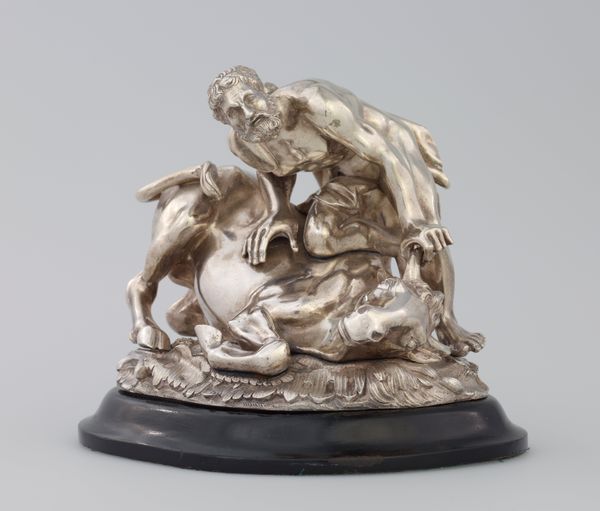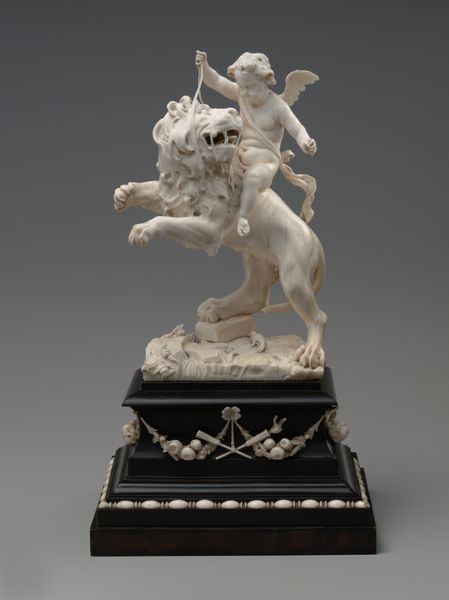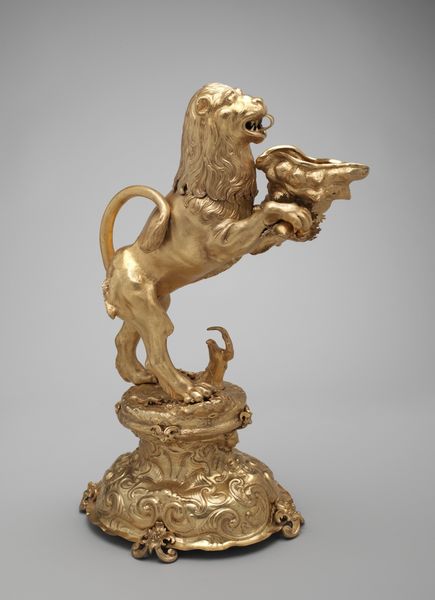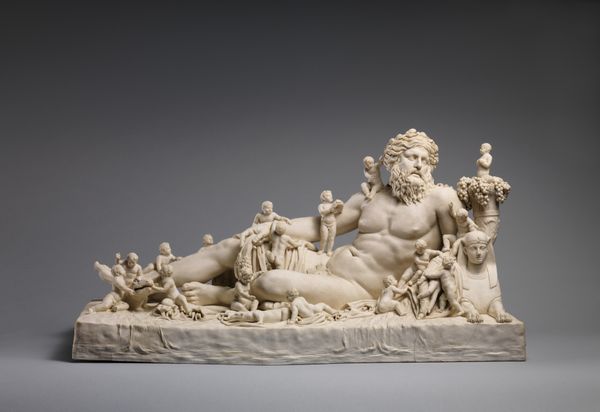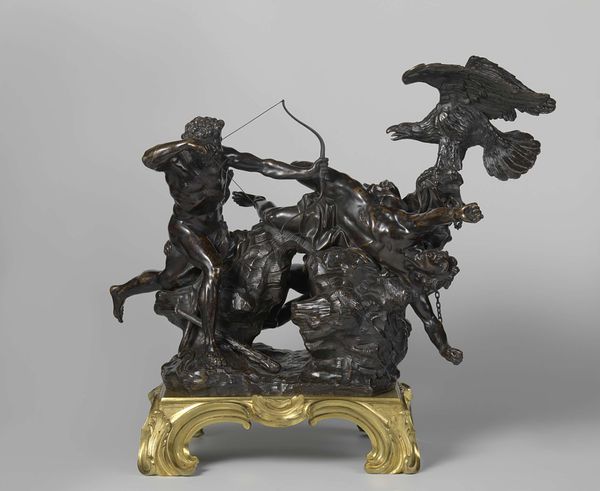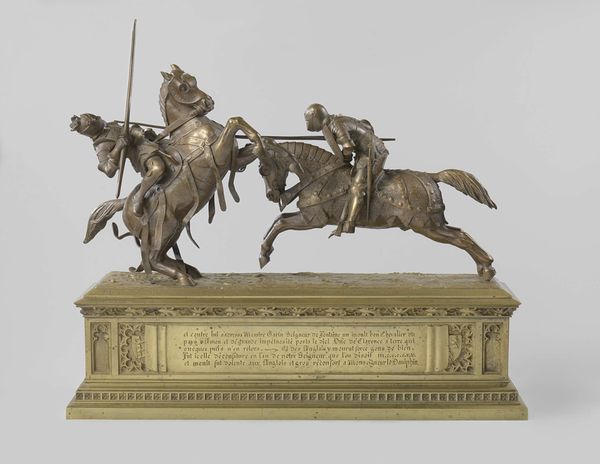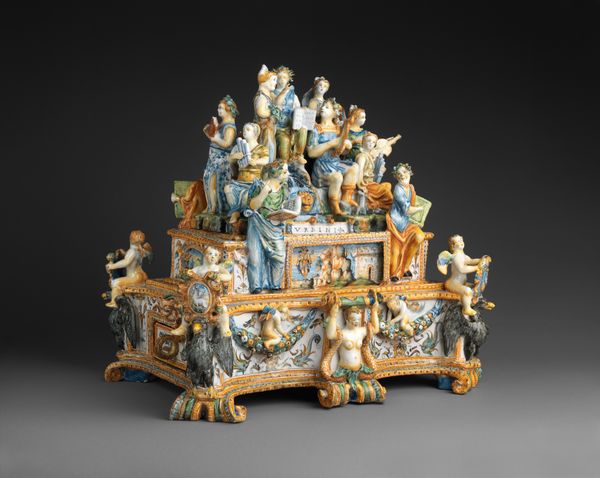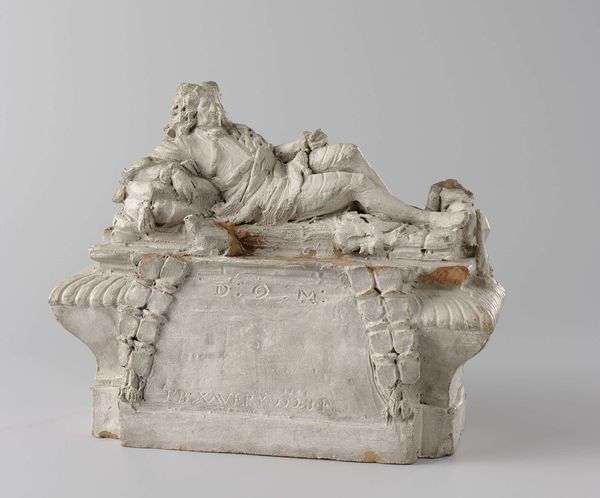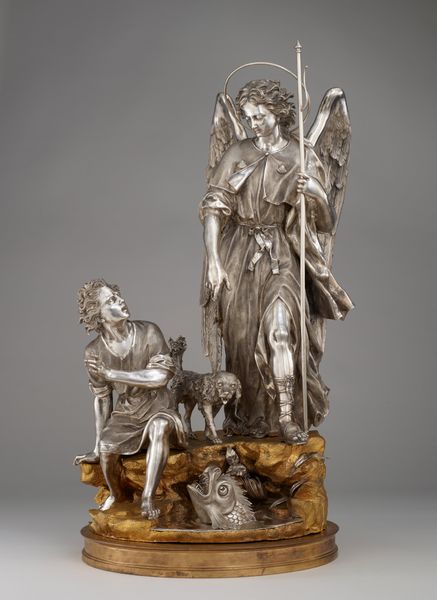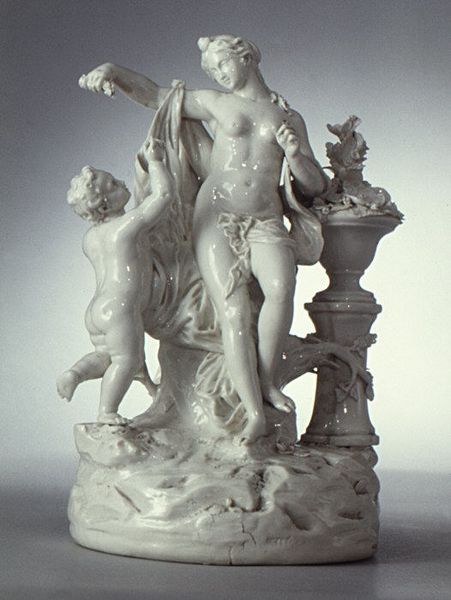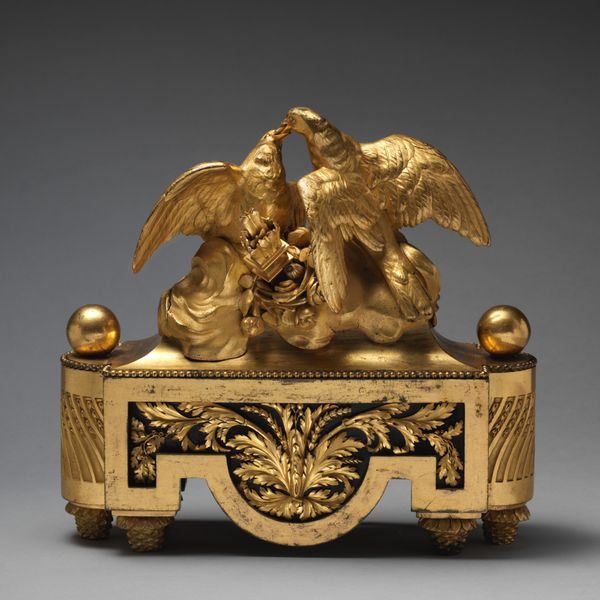
bronze, sculpture
#
allegory
#
baroque
#
sculpture
#
bronze
#
figuration
#
sculpture
Dimensions: height 53.5 cm, height 33.5 cm, width 56 cm, depth 11 cm, height 25.0 cm, width 72.5 cm, depth 25.0 cm, weight 25 kg
Copyright: Rijks Museum: Open Domain
Curator: The dynamism in this bronze sculpture, titled "River God with Hippocamp", crafted sometime between 1670 and 1770 by Pieter Xaveri, is remarkable. What are your immediate impressions? Editor: It strikes me as deeply melancholic. The river god's posture, that almost languid repose combined with the fierce gaze of the hippocamp, suggests a kind of world-weariness, perhaps a lament for lost power. Curator: That's insightful. River gods in art are frequently associated with both power and the flow of commerce, vital for the state’s well-being. His reclined position and the Hippocamp—a creature linked to the sea— could indicate complex mercantile relations. The visual display and the placement of the sculpture was clearly aimed at reinforcing that political power, though possibly in a private context, away from open, public forums. Editor: Absolutely. Water, in art, has often been a symbol of the unconscious, the source of life, but also the place where things are hidden. Here, he's almost merging with a dark cavern which evokes not a triumphant declaration, but some secret vulnerability. The base, teeming with sea motifs, reinforces this sense of hidden depths. The maritime scene with the ship is an open invitation to commercial opportunity and conquest, with direct references to the city or power represented by the ruling family. Curator: True, these types of bronze sculptures from this time were status symbols, expressing sophistication and control but in many instances, in an age of immense transformations across trade, scientific thinking and geopolitical realignments. Such an object may represent the shifting nature of such power Editor: Also consider the Hippocamp; as a symbol, the cross between horse and fish marries both terrestrial dominion with aquatic authority, expressing the all-encompassing reach of the patron. Curator: Precisely. It underlines that these objects were more than pretty displays. Editor: Exactly, seeing these details shifts my impression, revealing an object meant not only to project authority, but also the shifting political realities underneath its imagery. Curator: Indeed. It’s through understanding those coded visual narratives that we gain access to understanding the era and forces that led to such striking allegories in sculptural forms.
Comments
No comments
Be the first to comment and join the conversation on the ultimate creative platform.

